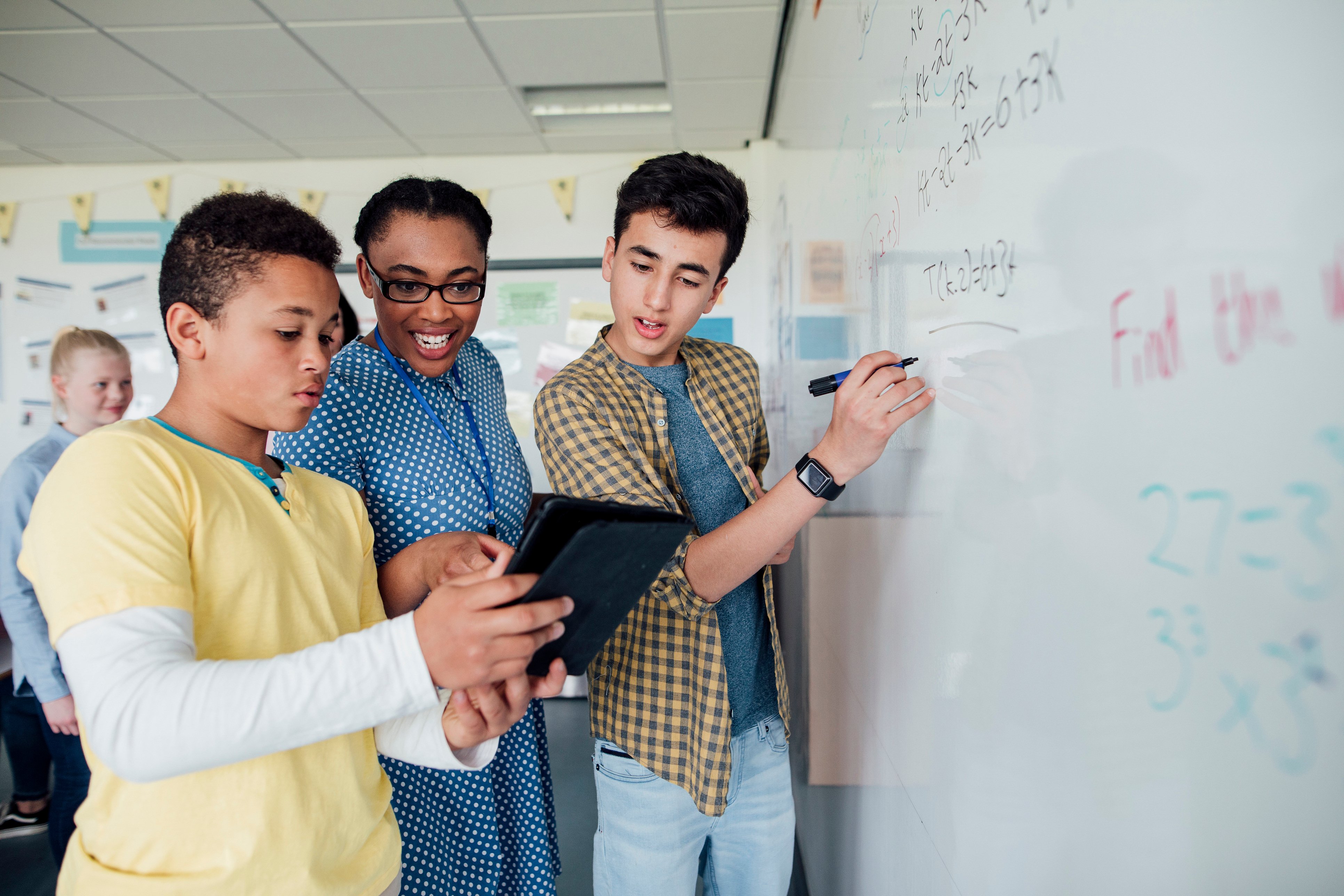Each student's learning journey is unique. Recognizing the fact that every student learns at their own pace, 39 states have incorporated personalized learning into their Every Student Succeeds Act (ESSA) plan. Teachers face growing pressures to tailor learning experiences to students, but struggle to make time due to being held back by legacy workflows and ongoing administrative tasks.
Leveraging AI for lesson plans, attendance plans, and family letters are just three examples of how artificial intelligence can support teachers. Keep reading to discover how AI can offer practical, time-saving solutions that supplement the teaching journey.
Download 100+ AI Prompts to Share With Teachers
What Is AI in Education?
AI in education refers to implementing systems and tools that help refine teaching methods, streamline repetitive work, and personalize student learning. With rapid content generation, sentiment detection, and advanced automation, AI can free up time for educators to focus on student engagement.
8 Innovative Use Cases of AI for Teachers
AI is reshaping traditional teaching approaches, offering solutions that complement teachers’ capabilities rather than replace them. Here are 8 use cases where AI is transforming the teaching experience:
- Enhanced Lesson Planning: Automatically generate customized lesson plans based on curriculum standards and individual student needs.
- Student Engagement Analysis: AI can analyze student voice data and identify patterns in how students interact with academics, teachers, and the school, helping provide them with customized support.
- Personalized Attendance Plans: AI systems can securely monitor and analyze student data to create customized attendance plans that address chronic absenteeism.
- Behavioral Improvement Plans: AI can identify students' behavior patterns and create a Behavioral Improvement Plan (BIP) tailored to the areas where a student needs support.
- Student Profile Summaries: AI can sift through mountains of student profile data to help teachers instantly generate a summary of key insights about a student, which can inform referrals or support plans.
- Designing Assignments and Activities: Educators can use AI solutions to create class units, activities, and tailored follow-up assignments for students based on their specific needs.
- Intervention Recommendations: AI can create personalized intervention strategies and plans based on students’ academic, attendance, and behavioral data, helping educators address issues early and deliver targeted support.
- Family Engagement and Communication: AI can help teachers generate attendance nudge letters for families and prepare for parent-teacher conferences.
Benefits of Integrating AI in Teaching
AI platforms are helping educators build a holistic learning environment where students get the personalized attention they need to graduate and find success in life. By providing teachers with actionable insights and automating time-consuming manual tasks, AI helps teachers refine their approach and lead to better student outcomes.
Here are some of the main advantages of AI implementation:
- Helps Make Data-Informed Decisions: AI tools track and deliver insights that teachers can use to better support students.
- Improves Personalization: AI can adapt content and pacing to each student's needs, improving comprehension and retention.
- Expedites Student Progress Monitoring: Teachers can view student progress or behavior summaries, saving time on routine monitoring tasks.
- Promotes Individualized Attention: AI-driven tools allow teachers to provide personalized attention based on each student's strengths and challenges.
- Reduces Teacher Burnout: By handling routine tasks, AI can help prevent teacher exhaustion.
How to Implement AI in Your Teaching
Schools and districts should take a mindful approach to AI integration. To ensure your implementation is effective, bring stakeholders onboard early on, and be open to changes as they happen. Here are some key points to consider:
- Assess Readiness: Determine how AI can fit into your classroom needs.
- Start with Key Features: Focus on the most relevant AI features of the tools you implement and see how they help with essential administrative and academic tasks .
- Explain AI’s Role to Students: Help students understand how their education will work with AI and how they can best use it.
- Evaluate and Adjust: Gather feedback and monitor outcomes to continuously improve how AI works for you.
Challenges in AI Adoption for Education
While AI can deliver numerous advantages to schools and districts, it also presents unique challenges. Understanding these issues beforehand empowers district leaders to overcome them and achieve successful AI implementation.
Some typical pitfalls include:
- Data Privacy Concerns: Your AI tool must adhere to the latest privacy standards to ensure confidentiality for students, teachers, and staff.
- Resistance to Change: There can be considerable skepticism among colleagues or guardians on the use of AI, especially from those well versed in legacy systems. By getting leadership involved early on and implementing a phased roll-out, you can get ahead of these concerns.
- Over-reliance on Technology: While AI can solve many problems, it should be understood that it is still not a viable substitute for human judgment, and as such, it should supplement, not replace, teacher involvement.
- Ethical Considerations: Evaluate the AI models powering your tools and systems to ensure they have features that eliminate bias and discrimination. Teachers and schools need to watch the system closely to make sure it doesn’t make mistakes or treat anyone unfairly.
- Skill Gap: Some staff members and teachers might need training to use AI to its full potential, and there can be a tendency in some cases for people to revert to legacy systems even in the presence of modern ones. Consistent training is required to bridge this gap.
Using Panorama's AI Solutions to Enhance Teaching
Artificial intelligence is redefining how teachers approach education. From behavioral monitoring to student voice analysis, AI enables educators to spend less time tracking metrics and more time engaging with students.
Panorama’s AI-powered solutions and features are designed to make it easier for K-12 teachers to attend to individual students:
- Panorama Solara: The AI platform Panorama Solara is designed for K-12 districts and offers tools for educators to create resources such as lessons and intervention plans. It securely integrates with district data to provide personalized student support and includes a library of research-backed prompts.
- Panorama Focus: A feature in Panorama Student Success that lets teachers quickly identify students who may require academic or social skills support, using a simple search prompt to surface specific needs.
- Panorama Insights: A feature in Panorama Student Success that instantly creates a snapshot of each student, including strengths and growth areas, providing context for personalized support.
See how AI can enhance the teaching journey and improve student outcomes by requesting a demo of Panorama Solara.







